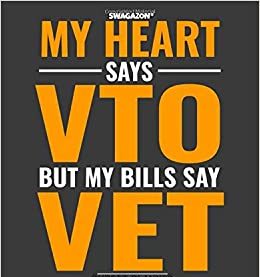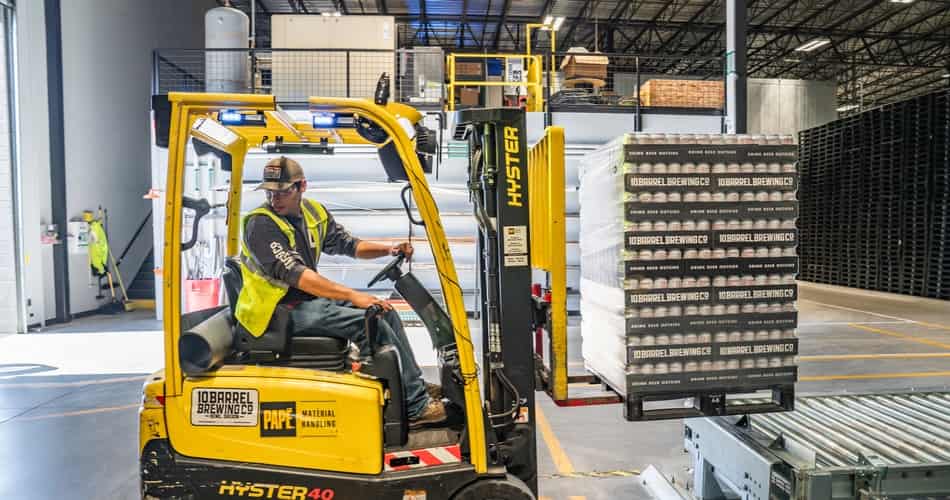VTO is an acronym for two leave categories: volunteer time off and voluntary time off. It is vital to understand the difference between the two leave categories to develop effective leave policies for employees.
VTO Meaning
The term VTO stands for both volunteer time off and voluntary time off. These are two unique leave policies offered by organizations to help employees give back to the company and save poor scheduling costs, respectively.
HR needs to understand the intricacies of both to create leave policies that incorporate a number of unique leave types.
What is Voluntary Time Off?
Voluntary time off (VTO) is a leave category used by companies to balance staffing requirements with frequently changing workloads. Creating schedules is an exact science but sometimes, due to certain issues too many people can be scheduled in a shift. In that case, a large cost can be incurred by the company. When this happens some companies allow the extra employees to take unpaid time off to save costs.
Although companies try to pitch voluntary time off as an opportunity to employees, it is a benefit for companies. Voluntary time off needs to give employees the opportunity to take time off without repercussions too. If it’s only one-sided it may seem manipulative.
Voluntary time off if done right can give employees an opportunity for work-life integration while bringing down costs for the company.
What Is Volunteer Time Off?
Volunteer time off is a class of paid leave and a benefit for employees. Companies provide their employees an opportunity to participate in community events as volunteers while giving them paid time off. Companies offer VTO to their employees by partnering up with non-profit organizations or letting them choose an organization independently.

Is VTO Paid?
Volunteer time off is when companies offer paid time off to their employees to provide them an opportunity to volunteer within their community. Along with the benefit of allowing employees to do what they love, companies also earn brownie points from the perspective of corporate social responsibility.
On the other hand, voluntary time off is granted by companies to their employees without pay.
Voluntary Time Off Policy
On the one hand, voluntary time off can be accessible to an employee who is a full-time worker for the company. On the other hand, employees that take voluntary time off or unpaid leave could lower their hours below a threshold for full-time status.
To prevent the latter from taking place, companies set up voluntary time-off policies that can facilitate the workers to keep hold of the benefits and gain promotions even after the workers take voluntary time off. As a result, the voluntary time off policy is insignificant if the employees decide not to use it. Another concern is that voluntary time off can also result in emptying an office and disrupting its operations due to an imbalance between the remaining work and available workers.
A company can require approval for voluntary time-off requests. In a similar aspect, companies can also make a voluntary time off policy where the employees are required to use up their paid leave before they become eligible for voluntary time off. Allowing voluntary time to be utilized can encourage its usage, and the policy can allow the employees to take voluntary time off after they deplete their paid leave.
Voluntary Time Off Best Practices
One of the best practices of voluntary time off is the integration of cost-cutting measures. For example, a company may have to pay the employer share for workers that take voluntary time off. However, at the same time, the company can avoid the cost of paying salary and wages to the employee who has voluntarily taken time off. In this way, a voluntary time-off policy can enhance employee satisfaction and prevent companies from facing economic challenges.
Volunteer Time off Policy
Companies that willingly invest time and effort in embracing their corporate social responsibility allow their employees to take VTO. Companies do it to provide their employees an opportunity to participate in community service programs.
Volunteer time off policy or VTO policy is a way for companies to give back to the communities. While at the same time giving its employees something else to focus on outside work. Companies also believe that taking care of the community helps build a brand and gives employees a sense of pride to be associated with a company that focuses not only on profit-making.
Employees may take up to 24 hours per calendar year towards any volunteer activities. Additionally, companies may have an approved list of charitable organizations with volunteering guidelines. Employees have the option to choose more than one organization within the stipulated hours. The hours’ break-up can be as follows:
Half-days off for group volunteer activities, which would be sponsored by the COMPANY (8 hours)
Hours off for personal volunteering by the employee
Employees have to fill out the VTO Request Form and submit it to their manager 7 days before the requested time-off. Such approval is at the discretion of the manager and HR.
Volunteer Time off Best Practices
Volunteer time off best practices is focused on uplifting communities with collaborations with non-profits. The practices might include administrative tasks and event planning of the VTO program. Volunteer time off or VTO time duration must be balanced with other forms of leaves to provide employees with adequate discretionary time for vacation and sick leaves.
The best practices for volunteer time off include suitable guidelines and regulations for employees while choosing which organizations to support in their VTO time duration. Volunteer time off best practices should address specific questions such as:
Can employees volunteer in political movements?
Do the values of the non-profit align with your organization’s values and goals?
Who approves the VTO requests?
What is the process of verification that would be required from employees?
VTO in Remote Work Environments
In remote work environments, VTO policies hold significant importance in nurturing employee well-being and fostering community engagement. With Volunteer Time Off allowing remote workers to actively participate in paid volunteering activities and Voluntary Time Off granting the flexibility of unpaid leave for personal reasons, these policies promote work-life balance, contributing to a positive and socially responsible remote work culture. In this section, we will explore essential considerations and best practices for implementing VTO in remote work settings, ensuring a supportive and inclusive work environment for remote employees.
VTO in Remote Work Best Practices
1. Flexibility in VTO Opportunities for Remote Workers
Volunteer Time Off presents remarkable flexibility for remote employees. Engaging in community events and virtual volunteering initiatives while receiving regular pay empowers remote workers to contribute to causes they are passionate about, regardless of their location. By offering diverse virtual volunteering options that cater to various interests and time zones, companies enable remote workers to meaningfully participate in charitable activities and contribute to community well-being.
Similarly, recognizing the importance of work-life balance, Voluntary Time Off provides remote employees with the flexibility they need. When personal commitments arise or unexpected situations occur, remote workers can take unpaid VTO without compromising job security. Implementing straightforward VTO request procedures ensures that remote employees can easily seek time off when needed, fostering a supportive and inclusive work culture.
2. Efficient Tracking and Approval Mechanisms
Establishing efficient tracking and approval mechanisms is crucial for VTO in remote work environments. Companies can utilize digital tools or time-tracking software to monitor remote employees’ VTO hours accurately. Additionally, implementing streamlined approval processes, such as online request forms with electronic signatures, ensures seamless handling of VTO requests. These mechanisms empower remote workers to engage in community service activities while enabling HR departments to monitor and manage VTO usage effectively.
For Voluntary Time Off, organizations can introduce user-friendly processes for remote employees to request unpaid time off through digital platforms. Streamlining the approval process ensures that HR departments can efficiently handle and approve VTO requests, supporting remote employees in maintaining work-life balance and attending to personal commitments without any hindrance.
3. Effective Communication and Awareness
In a remote work environment, effective communication and awareness play a crucial role in facilitating VTO opportunities. Companies should proactively communicate VTO policies, opportunities, and guidelines to remote employees through virtual meetings, company newsletters, or internal communication platforms. By sharing success stories of remote employees’ volunteering experiences, companies can inspire others to actively participate in VTO initiatives, fostering a sense of community and emphasizing the positive impact of VTO on remote work culture and the wider society.
Similarly, transparent communication and awareness are vital for Voluntary Time Off. Clearly communicating VTO policies and procedures to remote employees and providing regular reminders and updates through digital communication platforms help remote workers plan and schedule VTO effectively. By promoting open communication and creating awareness, organizations can ensure that remote employees understand the VTO process, thus supporting them in maintaining work-life balance and utilizing VTO when needed.
4. Consideration of Time Zone Differences
When implementing VTO in remote work environments, companies must consider time zone differences to ensure inclusivity. Encouraging virtual volunteering activities that can be carried out at suitable times for each remote employee’s location ensures that remote workers from different time zones can actively participate in VTO opportunities without facing scheduling conflicts. Emphasizing inclusive virtual volunteering initiatives guarantees equal access for all remote employees to contribute to community engagement efforts.
Similarly, accommodating time zone variations is crucial for granting Voluntary Time Off to remote employees. Companies need to set up a straightforward process for requesting unpaid leave, irrespective of geographic location, enabling remote workers to take Voluntary Time Off without undue hurdles. By considering time zone differences, organizations promote a supportive and inclusive remote work environment, enhancing work-life balance for all employees.
By incorporating flexibility, efficient tracking, effective communication, and inclusivity in VTO opportunities, companies can empower remote employees to maintain work-life balance, engage in community service, and pursue personal commitments. Ensuring seamless implementation of VTO in remote work environments contributes to a positive and supportive work culture while reinforcing the organization’s commitment to social responsibility.
VTO Impact on Business
The benefits of offering VTO to employees provide a competitive edge to businesses. Some of those include:
Attracting a Committed Workforce
The VTO policy helps to attract employees who have a sense of purpose and passion for social and community values. Such candidates would be open to aligning the same with the company’s ethos and values as well.
Higher Retention
Any policy that enables employees to fulfill their values convinces them to stay put with the organization. In addition, it leads to a reduced turnover rate, especially among millennial employees who engage extensively in volunteering and charitable activities.
Increase in Employee Job Satisfaction
Paid volunteer hours harness a sense of fulfillment among employees as they believe the company is committed to making a difference for the community at large. Consequently, they are inclined to put more effort into the work leading to an increase in productivity. Employees enjoy a positive outlook towards work-life balance and develop stronger bonds with colleagues.

Final Verdict on VTO
VTO has two meanings. VTO, volunteer time off, can be defined as the practice that involves allowing employees to draw full pay while giving time off for volunteering at non-profit organizations. As voluntary time off, VTO can be defined as the practice of allowing employees to take time off without their pay being affected to balance the staffing requirements.
If done right, VTO can be beneficial for both the company and its employees.




